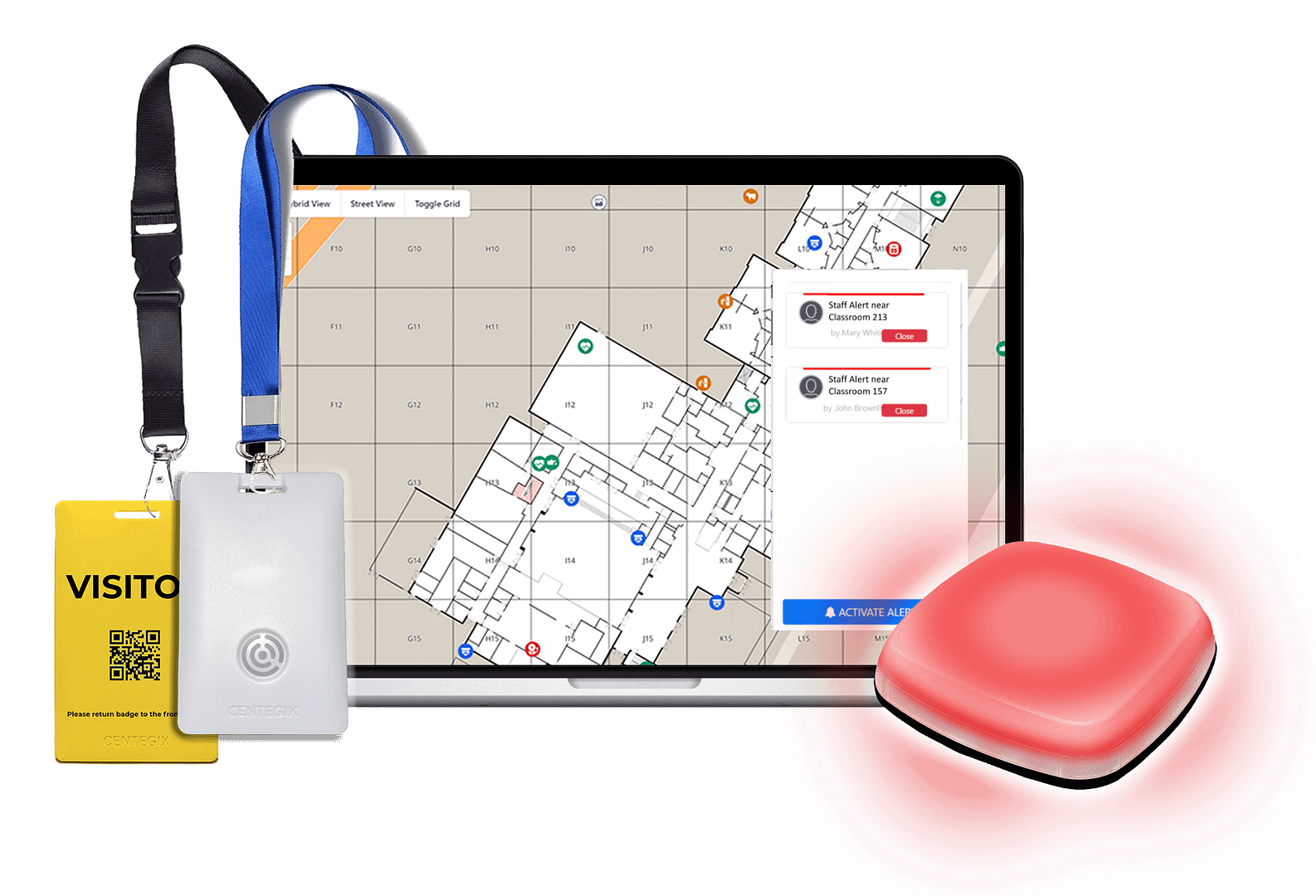The current healthcare staffing crisis creates a vicious cycle. Without adequate staff, incidents of violence in healthcare are more likely to occur and more likely to result in harm to all parties involved. The stress that stems from inadequate support causes many healthcare professionals to suffer from mental health challenges or burnout. The result? Decreased quality of care and high turnover rates. Healthcare careers in the U.S. require demanding and sometimes dangerous duties, including exposure to infectious diseases and violence from patients, families, and other visitors. The COVID-19 pandemic presented even more stressors, including a surge of patients, longer working hours, shortages of supplies and protective equipment, and increased workplace violence in healthcare. Healthcare workers are reporting levels of fatigue, loss, and grief at levels higher than before the pandemic. The U.S. Bureau of Labor Statistics recently found that healthcare workers’ risk of injury due to workplace violence is five times greater than that of workers in other industries. Violence in healthcare affects all staff—a recent poll of more than 30,000 emergency physicians found that witnessed emergency department violence was up 24 percent when compared to a similar poll conducted in 2018. Sixty percent of those who have experienced violence are bedside nurses. Unsurprisingly, many healthcare workers don’t feel safe at work, leading to increased turnover and worker dissatisfaction. Here’s how organizations can address workplace violence in healthcare by creating a culture of safety. 
Healthcare Talent Feel Unsafe at Work
Healthcare workers’ lack of confidence regarding safety can be attributed to several factors, but the result is a surge in workplace violence in healthcare. The statistics speak for themselves—a recent article from National Nurses United found that 81.6% of nurses reported experiencing at least one type of workplace violence in 2023, and 45.5% agree that workplace violence in healthcare increased in the past year. More than 80% of care providers reported the assaults led to:
- Loss of productivity from emergency physicians and staff
- Increased staff anxiety
- Increased wait times
- Reduced focus from physicians and staff
A major factor contributing to healthcare workers’ unease in the workplace is inadequate staffing. Inadequate staffing affects the safety of nurses and patients. One nurse from Illinois said, “Working on a psych unit with 20 patients and two nurses, while being [a] charge [nurse]. I have been verbally and physically threatened. I have been punched, slapped, spat on, hit, kicked, and bitten.” Focusing on safety and proactively addressing the issue of workplace violence in healthcare is the key to improving employee and patient satisfaction.
How to Implement Safety Measures
A successful safety regime requires a combination of effective policy, physical security and safety measures, reliable technology, and assessment. Policy. Review your healthcare organization’s current operations and safety policies. This is a crucial step in understanding how your organization supports the safety and well-being of healthcare workers. This step can also pinpoint ways workers may need help in the event of workplace violence in healthcare. Some questions to consider:
- Do you have dedicated well-being personnel?
- Do any of your policies or procedures stigmatize seeking help?
- Does your safety plan emphasize communication?
- Are professional well-being measures part of quality improvement?
Physical safety measures. Healthcare organizations must continuously pinpoint gaps in physical safety and security protocols and checks. Physical safety and security technology may include surveillance cameras, duress motion sensors, wearable duress buttons, and other tools. These technologies can protect healthcare organizations from internal and external threats to staff, computers, records, server rooms, and medical equipment. An important part of implementing physical safety measures is evaluating how they can mitigate workplace violence in healthcare, how staff will interact with the tools, and how your unique organization can obtain the highest benefit from the tools. Reliable technology. Efficient communication is key during emergencies, especially in instances of workplace violence in healthcare. Ineffective or slow technology can delay emergency response and compromise the window for de-escalation. When crafting your organization’s safety measures, coordinate safety technology and assets to empower healthcare workers with fast, efficient technology to respond to emergencies. Look for technology that can automate communication with mapping and precise locating capabilities, interact with alerts, and dispatch emergency response immediately as an additional layer to your existing safety infrastructure. Workplace safety checklist. While you can’t necessarily control the rise of workplace violence in healthcare, you can make your organization safer for staff. A comprehensive safety strategy can help you distinguish your facility, recruit and retain quality staff, and mitigate turnover costs. If you want to assess safety plans with a single, comprehensive checklist, click here.
Combat Staffing Shortages in Healthcare
The United States is predicted to see a shortfall of up to 450,000 RNs by 2025. However, if healthcare workers feel safe and supported, they are more likely to remain in the profession. According to a recent study, 29% of nurses reported they were planning to leave their current role in direct patient care within the coming year and many reported a desire to leave the healthcare workforce entirely. Notably, all U.S. employers are required by law to provide a work environment “free from recognized hazards that are causing or are likely to cause death or serious physical harm.” Violence in healthcare is a recognized hazard, and employers have the responsibility to mitigate that hazard. Here are a few effective violent incident response measures:
- Implement a system for staff to effectively seek immediate assistance when a situation begins to escalate or become aggressive, or indicators of potentially violent behavior are identified.
- Allocate sufficient staff who are trained and available to respond to assist with de-escalation and maintain patient and staff safety.
- Provide immediate care or first aid to employees affected by workplace violence.
- Identify all employees involved in the incident and conduct wellness checks.
- Share available resources with all employees who encountered the incident, including confidential counseling and paid time off when needed.
Sufficient staffing and safety measures are crucial for healthcare workers and patients. Investing in stronger safety measures proactively can save hospitals significantly in the long run. Hospitals spent an estimated $1.3 billion on reactive workplace violence response efforts in 2016. The costs of replacing a nurse are also high, which can quickly surpass $100,000 due to recruiting, hiring, orientation, and training costs. Replacing emergency physicians can cost more than double that. Plus, hospital administrators must deal with increased overtime or PRN expenses required while the new provider is being recruited and trained.
Protect Your Nursing Staff with CENTEGIX®
Addressing violence in healthcare in conjunction with evaluating safety technology can be extremely stressful—but it doesn’t have to be. CENTEGIX is honored to provide hospitals with tools to keep their workforce safe. The CENTEGIX Safety Platform™ is an advanced hospital safety solution designed to create a culture centered around safety, improving retention, and reducing turnover. The CENTEGIX Safety Platform offers precise, room-level location capabilities to ensure an accelerated and effective response during moments of need. The Safety Platform at a glance:
- Discreet, one-button wearable duress badge
- Digital mapping to outline floorplans, safety assets, and incident locations
- Total campus coverage dependent on private Bluetooth network
- Precise locating capabilities activated only during an incident
- Easy installation, with no hardwiring required
- Accessible and automatic reporting collected within an easy-to-use dashboard
- OSHA, CMS, and JC compliant
CENTEGIX Safety Platform offers a multi-pronged solution to enhance safety in your facility. The CENTEGIX Safety Platform can secure every square foot of hospital property without Wi-Fi and cellular dead zones. Hospital staff can request help anywhere on campus, from secure ORs to parking lots, with no Wi-Fi or cell service required. The CENTEGIX CrisisAlert wearable duress button provides an easy, discreet way for staff to request help, allowing them to leverage their de-escalation training. With precise location accuracy, responders know exactly where to dispatch help. Whether staff are providing care in patient rooms, working in the emergency bay, or walking in the parking garage, CENTEGIX CrisisAlert delivers 100 percent full-campus coverage for your staff. CENTEGIX CrisisAlert can be installed with no alterations to physical structure or electrical wiring, and installation can be completed with minimal disruption to patient care. CENTEGIX Safety Blueprint™ provides hospitals with digital, multi-layered maps of their campuses—including information about safety assets—which is invaluable for staff and first responders in high-stress emergencies. CENTEGIX Safety Blueprint is highly customizable so that hospitals have a solution tailored to their needs. CENTEGIX Visitor Management enhances the supervision of hospital traffic for administrators. Enhanced Visitor Management is capable of locating all guests, volunteers, and contractors, in real-time, through live digital maps. It also records visitor details for future reference. CENTEGIX aims to lessen the burden related to workplace safety, empowering your staff to focus on what they do best—caring for patients. Accessible and automatic reporting provides collaboration between departments within the healthcare setting so that everyone is working from the same foundational information. The uptick in workplace violence in healthcare means every second matters. Set your healthcare organization up for success by partnering with CENTEGIX. CENTEGIX is an industry leader in wearable safety technology with over 600,000 badges in use. Leaders in over 12,000 locations nationwide trust CENTEGIX’s innovative safety solutions to empower and protect their people. Click here to see how CENTEGIX can enhance workplace safety in your healthcare organization.











